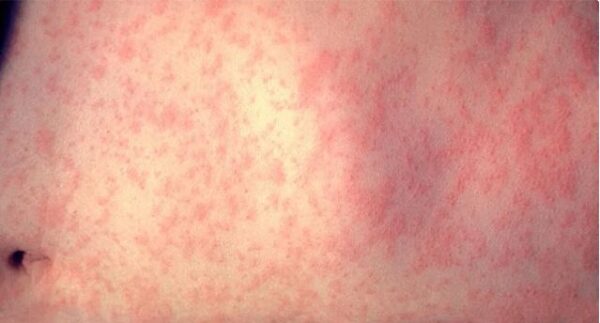Airborne diseases are caused by viruses and bacteria that can float in the air.
Airborne viruses and bacteria tend to spread easily and can be more difficult to control than pathogens. They usually begin to spread when a carrier coughs or sneezes and is accidentally inhaled. When these germs are inhaled, they will reside inside the body and cause disease.
Distinguishing between airborne and droplet transmitted diseases
- Airborne disease: Occurs when pathogens become airborne after an infected person talks, coughs, or sneezes. Those pathogens can float in the air and be inhaled by bystanders even after the original sick person is no longer nearby.
- Disease transmitted by droplets: Occurs when pathogens from a patient’s respiratory secretions enter the eyes, nose or mouth or through cuts or wounds on the skin of another person.
These droplets can contaminate the surrounding environment for a certain period of time (depending on what the pathogen is). Surfaces such as table tops, doorknobs, computer keyboards, phones, stair handrails, etc. are easily contaminated surfaces. Through your hands touching these surfaces and touching your eyes, nose, mouth – your body will become infected.
Types of diseases transmitted through the air
According to the Centers for Disease Control and Prevention (CDC), airborne diseases can be spread through direct or indirect transmission – depending on the type of germs involved.
Airborne diseases are spread through aerosol particles (small enough) to travel through the air.
In addition, according to VeryWell, some airborne viruses can live on surfaces for 1-2 hours after leaving the patient’s body. Infection then occurs through touching a surface that has the virus on it and touching your eyes, nose and mouth.
There are many different types of airborne diseases, the most common of which include:
Measles
Measles is one of the most dangerous airborne diseases because it can affect up to 90% of people in close contact with an infected person. The virus that causes measles lives in mucus in the nose and throat and is spread through coughs and sneezes.
Image of rash in measles. (Photo: ST).
Measles is usually caused by an RNA virus of the Morbillivirus genus in the Paramyxoviridae family. The virus that causes measles can survive up to 2 hours in the air after the person carrying the disease leaves. You can infect others up to 4 days before and 4 days after the measles rash appears.
Children under 5 years old, adults over 20 years old, pregnant women, and immunocompromised people are more likely to have complications and more severe symptoms from measles.
Tuberculosis
Tuberculosis is a disease caused by bacteria in the lungs and throat. When a person with TB coughs, talks or laughs, TB bacteria are released into the air. Tuberculosis is not transmitted through touching, kissing or sharing food. Symptoms of tuberculosis are different for each person, depending on the location and number of bacteria residing in the patient’s body.
People with weakened immune systems are most at risk, and TB symptoms can appear within days of exposure. In many other cases, TB bacteria can take up to several months or years to begin to develop the disease. When the disease begins, bacteria multiply rapidly and attack the lungs.
Common symptoms of tuberculosis are usually a severe cough lasting more than 3 weeks, chest pain, cough mixed with blood or phlegm, fatigue, unusual weight loss, loss of appetite, chills, fever, sweating. night odor.
Other diseases
Measles and tuberculosis are two typical airborne diseases. Some other diseases are spread through respiratory droplets and can linger in the air or on surfaces, including:
- The common cold is caused by Rhinovirus.
There are more than 100 types of germs that cause the common cold. (Photo: ST).
- Chickenpox is caused by the Varicella zoster virus. The disease can be spread through contact with skin lesions but can also spread through the air. If you have chickenpox, you are contagious for 1-2 days before the red bumps appear, and it can take up to 21 days after exposure for the disease to flare up.
- Paramyxovirus mumps is another highly contagious viral disease. You can infect others before symptoms appear and for up to 5 days afterward.
- Whooping cough is an infection caused by the bacteria Bordetella pertussis. Whooping cough causes swelling of the upper respiratory tract, leading to a persistent cough, and is most contagious about 2 weeks after the cough begins.
- COVID-19 is caused by the SARS-CoV-2 virus. Although COVID-19 is not typically thought of as an airborne disease, in some situations the SARS-CoV-2 virus behaves like it. The most common symptoms of COVID-19 include fever, cough, fatigue and difficulty breathing.
- Aspergillosis is caused by the fungus Aspergillus.
- Anthrax is a bacterial infection caused by exposure to Bacillus antharacis spores. This serious bacterial infection can be transmitted from livestock to humans.
- Diphtheria is caused by the bacterium Corynebacterium diphtheriae. Diphtheria causes damage to the patient’s respiratory system and can cause complications in the patient’s heart, kidneys or nerves.
- Respiratory syncytial virus (RSV) infection is another cause of the common cold but can be dangerous in infants and older adults.
- Viral meningitis causes inflammation around the meninges and spinal cord. A number of different viruses can cause meningitis, but not all of them are transmitted through the air.
Symptoms of airborne diseases
Airborne diseases often lead to one or more of the common symptoms below. Note, these symptoms will vary in severity and the number of symptoms experienced depends on the infection status as well as the type of virus and bacteria the patient has.
Specifically:
- Nasopharyngitis, sinusitis, pneumonia
- Cough
- Sneeze
- Chest congestion
- Have a runny nose
- Sore throat
- Inflammation of the salivary glands
- Headache pain
- Pain and fatigue in part or all of the body
- Loss of appetite, loss of appetite
- Unusual weight loss
- Fever or chills
Airborne diseases are more likely to cause serious illness in the elderly, young children, and people with compromised immune systems.
Symptoms of airborne diseases vary from person to person. (Photo: ST).
3. Prevent airborne diseases
Many airborne diseases are preventable and if your area or family has members with this disease, you can proactively prevent them to ensure your health and limit the risk of infection.
Vaccines
There are currently many vaccines to prevent airborne diseases such as COVID-19, measles and chickenpox. Vaccines are important in reducing the number of infections, reducing the risk of severe disease progression and are the best way to protect yourself and your family from the risk of disease. Vaccination should be complete, including periodic booster vaccinations.
Vaccination is the best way to prevent airborne diseases. (Photo: ST).
Clean and hygienic
The issue of cleanliness is always emphasized as important in preventing infectious diseases in general and airborne diseases in particular. In particular, always cover your mouth and nose with a disposable tissue or your elbow when coughing or sneezing when you are sick.
Don’t forget to wash your hands regularly before eating, after going to the bathroom, after touching surfaces in public places or when a family member is sick.
Maintaining a safe distance of over 2m in crowded, poorly ventilated areas is what we have learned after 3 years of dealing with COVID-19. This also means staying away from people who are experiencing respiratory symptoms or after being diagnosed with infectious diseases.
Wear the mask
You can protect yourself during cold and flu season or local COVID-19 outbreaks by wearing a mask when in crowded places or if someone in your household is sick.
Keep your home ventilated by regularly opening windows, using an air purifier with an activated carbon filter when the area you live in is often polluted,…














